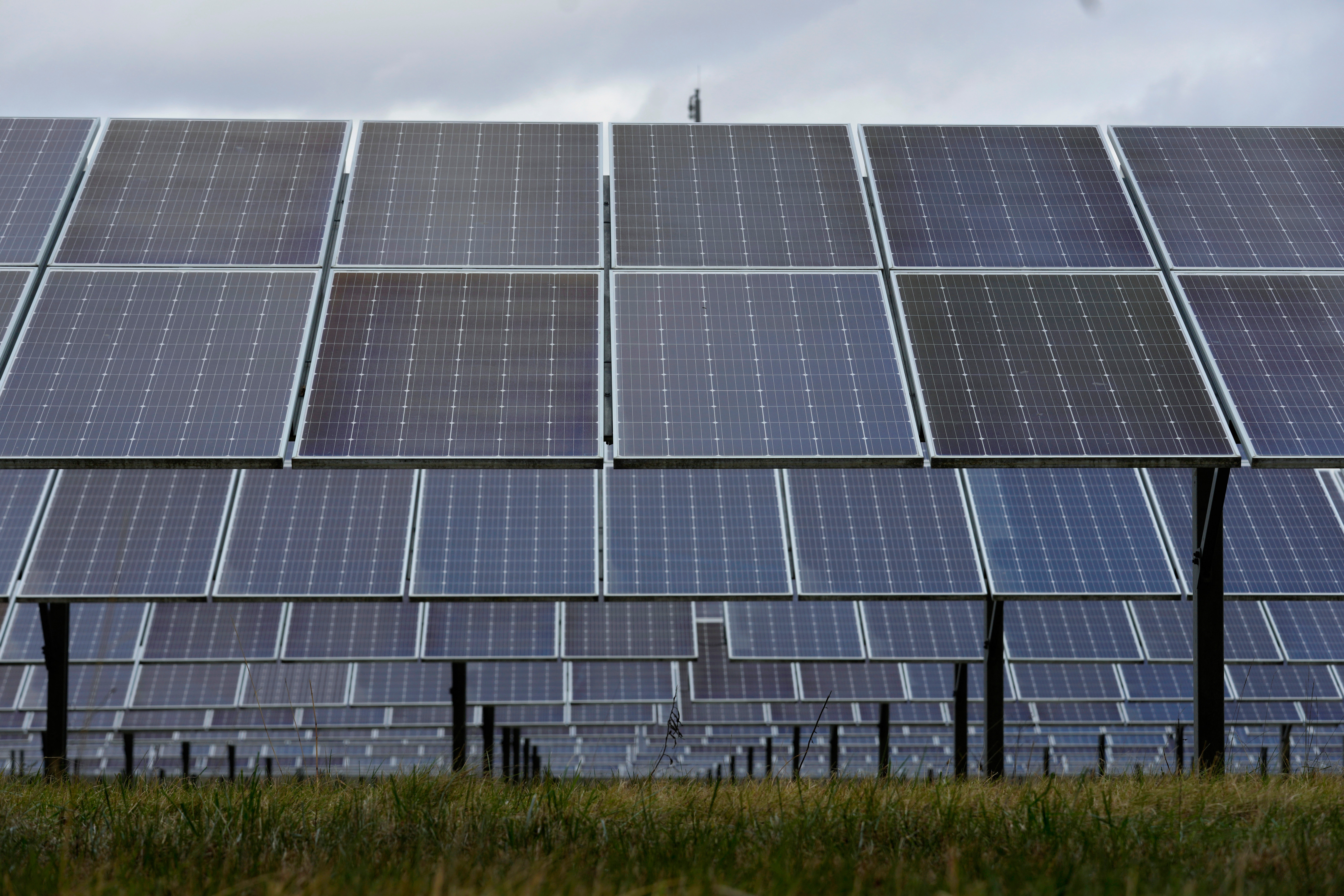The time's right for your home to catch some rays
Solar power is taking off, thanks to new green initiatives by the Government, says Graham Norwood

If you think solar panels in the UK are only for eco-freaks or hopeless optimists, think again. Soon they will be commonplace, even under our grey leaden skies.
If you think solar panels in the UK are only for eco-freaks or hopeless optimists, think again. Soon they will be commonplace, even under our grey leaden skies.
In a bid to meet its targets to cut greenhouse gas emissions, the Government wants to increase the number of panels fitted to existing homes, and has introduced strict planning targets to boost the number on new-build properties.
There are thought to be fewer than 20,000 UK homes with solar panels or photo-voltaic tiles, a similar but more expensive water-heating system based on tiles built into the roof. Germany has 140,000 and Japan 400,000.
These panels and tiles gather energy radiated from the sun and convert it into heat. This is piped into the domestic water system to complement the heating provided by the boiler. On a sunny summer day, even in this country, solar energy can provide all the hot water required by a typical household without the boiler having to top it up.
Most existing homes qualify for a grant for up to 50 per cent off the typical £8,000 cost for the panels and installation, and can thereafter save about half the year-round average cost of heating water, according to the Energy Saving Trust, a government body promoting energy efficiency.
There is almost no home to which panels cannot be fitted, providing it has an area of roughly south-facing roof. For example, in Kent, the Pond Oast House at Frittenden (for sale for £550,000 from Jackson-Stops & Staff, 01580 720 000) has discreet panels installed at the back. Even listed buildings can have them, provided the owners gain listed building consent, as Dame Beatrice Macdonald can testify.
She had four panels fitted on her eight-bedroom grade II listed house, called Bishops, at Otham in Kent, and relies on them as the sole source of water heating from May to September. "We wanted to be as green as possible and even looked at wind power but opted for solar energy because it was so easy," says Dame Beatrice, who is now selling her home for £1.75m (Knight Frank, 01892 515 035). "The panels and installation cost £6,000 and we calculate it would take five years to recoup that cost. But it's worth it. I just wish everyone would do it," she says.
Any homeowner wanting to install panels can call the Energy Saving Trust's hotline on 0800 512 012 or visit one of its local energy centres (listed on www.est.org.uk) for advice on the best equipment, local suppliers and experienced fitters.
But it is on new homes that panels are set to proliferate. Surrey is the first council to agree a new county plan including Planning Policy Statement 22, a central government guideline insisting that all new developments get at least 10 per cent of their energy from "sustainable sources" - in effect, wind or sun.
"As a windmill on an estate wouldn't be very popular in Surrey, we're going to use solar panels," says Ivan Ball of Linden Homes, which is building seven developments in the county. "Each house will have a 2sqm panel. Because we buy in bulk and will use our own sub-contractors to fit them, it will cost only £1,500 per property," he says.
A few developers have already fitted panels voluntarily. The appropriately-named Green Building, a block of flats in south Manchester built to high eco-friendly standards by Taylor Woodrow, has a bank of panels on its roof. They provide about 40 per cent of the heating for water used in its 32 one- and two-bedroom units (on sale from £155,150; 0161-237 1909).
"It may well be that within the next decade our government will follow the lead being taken by Spain and keep increasing the share of new and second-hand homes that must have panels," says a spokeswoman for the Royal Institution of Chartered Surveyors.
Spain has just issued national planning guidelines insisting on a 10-fold increase in the number of panels fitted to homes by 2010. In 2002, local planners in the Andalusian capital of Seville introduced a similar policy and developers and owner-occupiers alike responded quickly.
"Here, most homeowners are still suspicious of solar heating," says Ball of Linden Homes. "They think it's a device on their roof that they don't understand and may prove a hassle to maintain, even though it's nothing of the kind. There's still an education programme to be undertaken."
The Government hopes we'll be quick learners: it aims to generate 10 per cent of all UK electricity from renewable sources by 2010, and improving energy efficiency in the home is identified as the way to hit that target. Householders in England, Wales and Northern Ireland can get grants under the Clear Skies initiative (08702 430 930).
Is your home suitable?
* If your property has two to four square metres of south-facing roof receiving no or little shading during the main part of the day, it should be suitable.
* Flat-roofed properties can have solar panels mounted on south-facing stands that tilt the panels at 30 to 40 degrees.
* You may also need internal space for an additional water cylinder.
* Some combination boilers are not compatible with solar energy sources; consult a specialist.
Source: Energy Saving Trust (www.est.org.uk)
Join our commenting forum
Join thought-provoking conversations, follow other Independent readers and see their replies
Comments